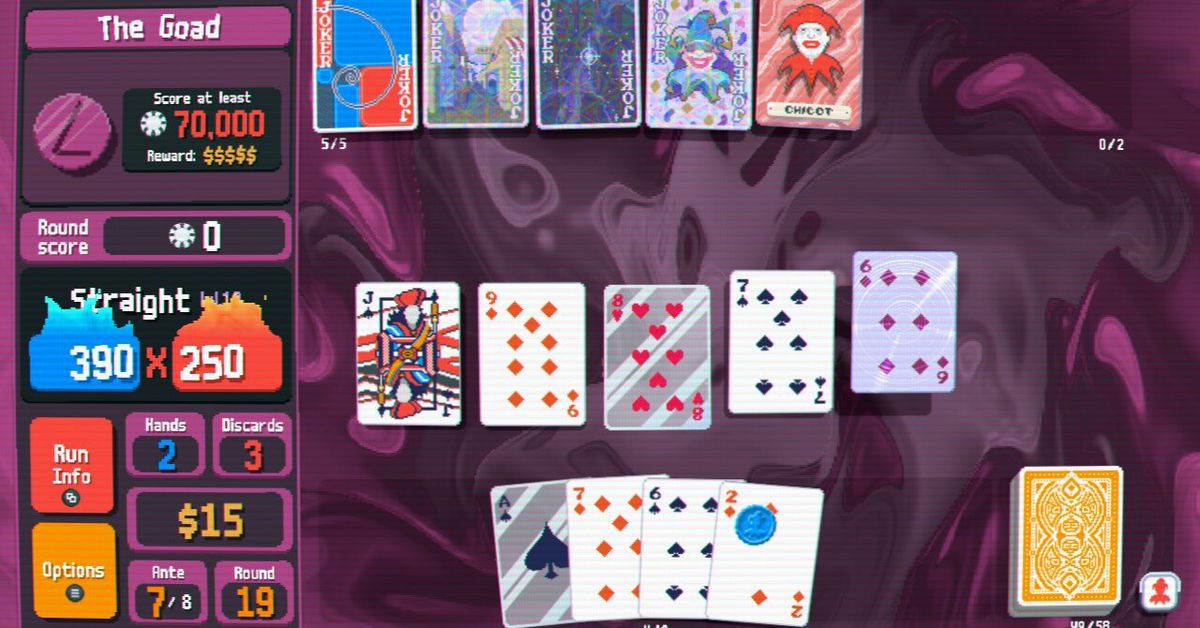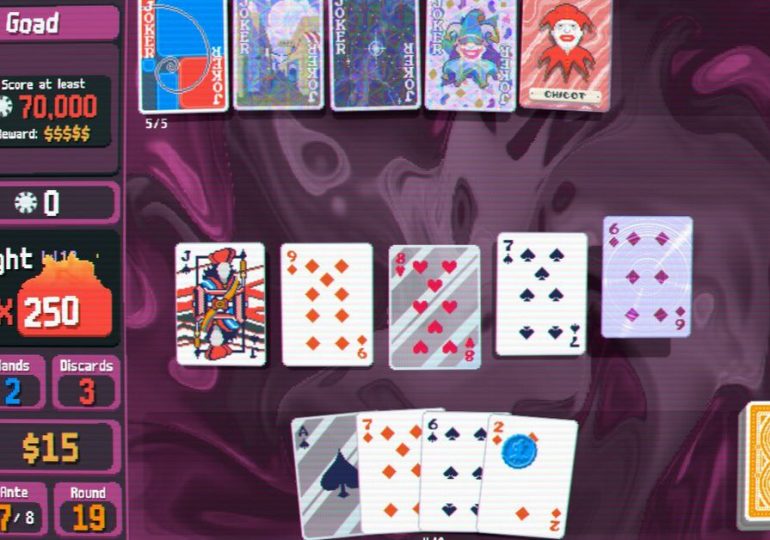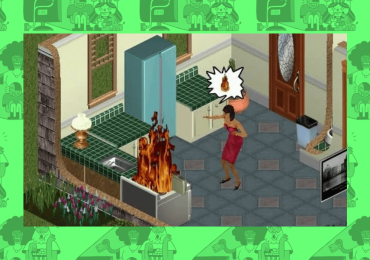
Every so often, a run of Balatro, the hot new poker game with a roguelite twist, will click. The random number generator is on my side when I pull a series of buffs that perfectly align: It’s the Half Joker (+20 to the multiplier for hands with three or fewer cards) pulled as I was upgrading pair, three of a kind, and high card hands, topped off with a Supernova (the number of times a poker hand’s been played is added to the multiplier), Burnt Joker (upgrades your first discarded hand) and Space Joker (a one-in-four chance of upgrading a played poker hand). Add in extra face cards, a few Stone cards (that add chips) and buffs to those, too, and it feels hard not to win.
To describe this build in more straightforward terms, they’re a series of buffs that benefit small, heavily upgraded hands with high-scoring cards and lots of multipliers. These buffs all work together in Balatro’s satisfyingly interlocking systems to create a sort of synergistic harmony that these games thrive on.
A build like this isn’t easy to put together, especially if luck of the draw isn’t on your side. But when you get it just right, a deck like this feels like you’ve cracked Balatro wide open — as if you’re cheating. And it feels so, so good.
I’m not the only one who sees the appeal: Balatro grossed more than $1 million within hours of its release in late February, according to GamesIndustry.biz. The game was profitable within one hour after it went live, publisher Playstack told the publication. The appeal of the game is in how simple it is in practice: It’s just making the score go up by playing poker hands. A run takes place over eight sequences (called antes), each consisting of three rounds (called blinds). With each round, the score necessary to continue goes up — so to keep playing, you must upgrade your cards and add different modifiers using the aforementioned Jokers to rack up bigger and bigger numbers. When you lose, you erase all the progress toward the eighth and final ante. (You can keep playing in endless mode, however, if you beat the whole run.) The randomness of the cards available in the shop between rounds means there’s never two identical runs, making Balatro feel endlessly repeatable.
All of these buffs and extras, which you’re able to purchase between rounds like in your typical roguelite, are what break the game of poker, switching up the rules of the well-trodden card game in bizarre and clever ways. Most of my Balatro runs aren’t outrageous, as I struggle to acquire cards that work with each other. But when you do, it feels like you’re absolutely breaking poker and Balatro. LocalThunk isn’t the first game developer to do this: Video games have a long history of letting players “break” the game in lots of different ways.
In the simplest ways, it’s how Nintendo lets players jump in and out of levels through Super Mario Bros.’ iconic green warp pipes. Then there are games like deck builder Slay the Spire, which Balatro has drawn several comparisons to, that lets players stack modifiers to get ridiculous builds. Noita is another roguelite — but with sorcerers and spells instead of cards — that uses a reroll machine to generate different perks. But players found out there’s a way to break the machine and bring costs down into single digits, meaning perks are much less expensive to buy. Like with Balatro and other roguelite games, it takes work to get there. (And luck, too, which keeps things interesting!) But it’s satisfying enough to do, and the reward is worth it.
Breaking games in this way feels different than just turning on an invincible mode because there is skill and work involved; for every time I’ve been able to break Balatro, there are dozens of other tries that have gone nowhere. The possibilities of what I can do in Balatro keep me coming back to the game repeatedly. I saw a screenshot of Balatro on social media somewhere in which the player had many more Joker cards than you’re typically allowed to play. It was so ludicrous that I thought the image was fake. It’s not, and I can’t wait to unravel the method and see for myself just how badly I can break Balatro.








